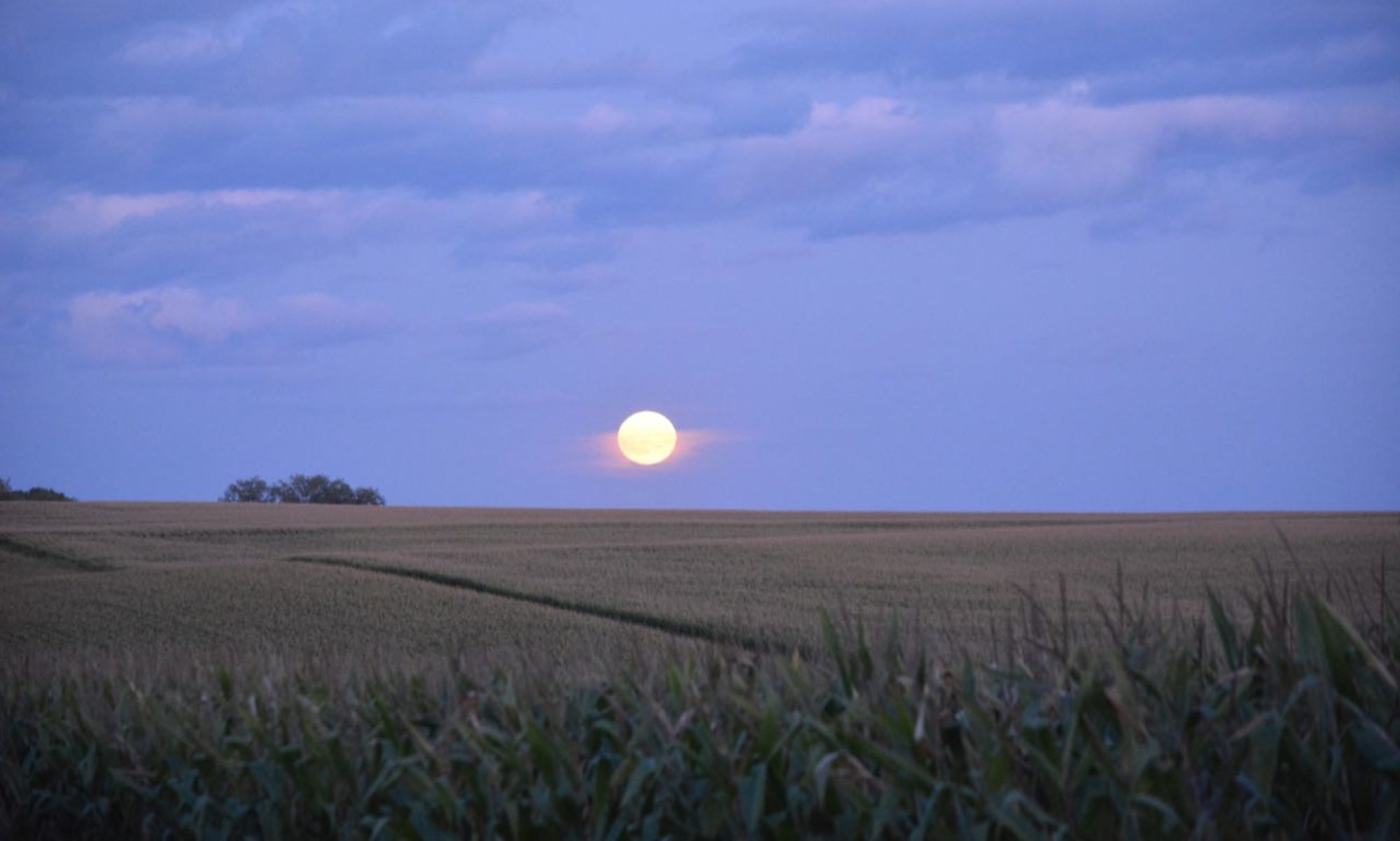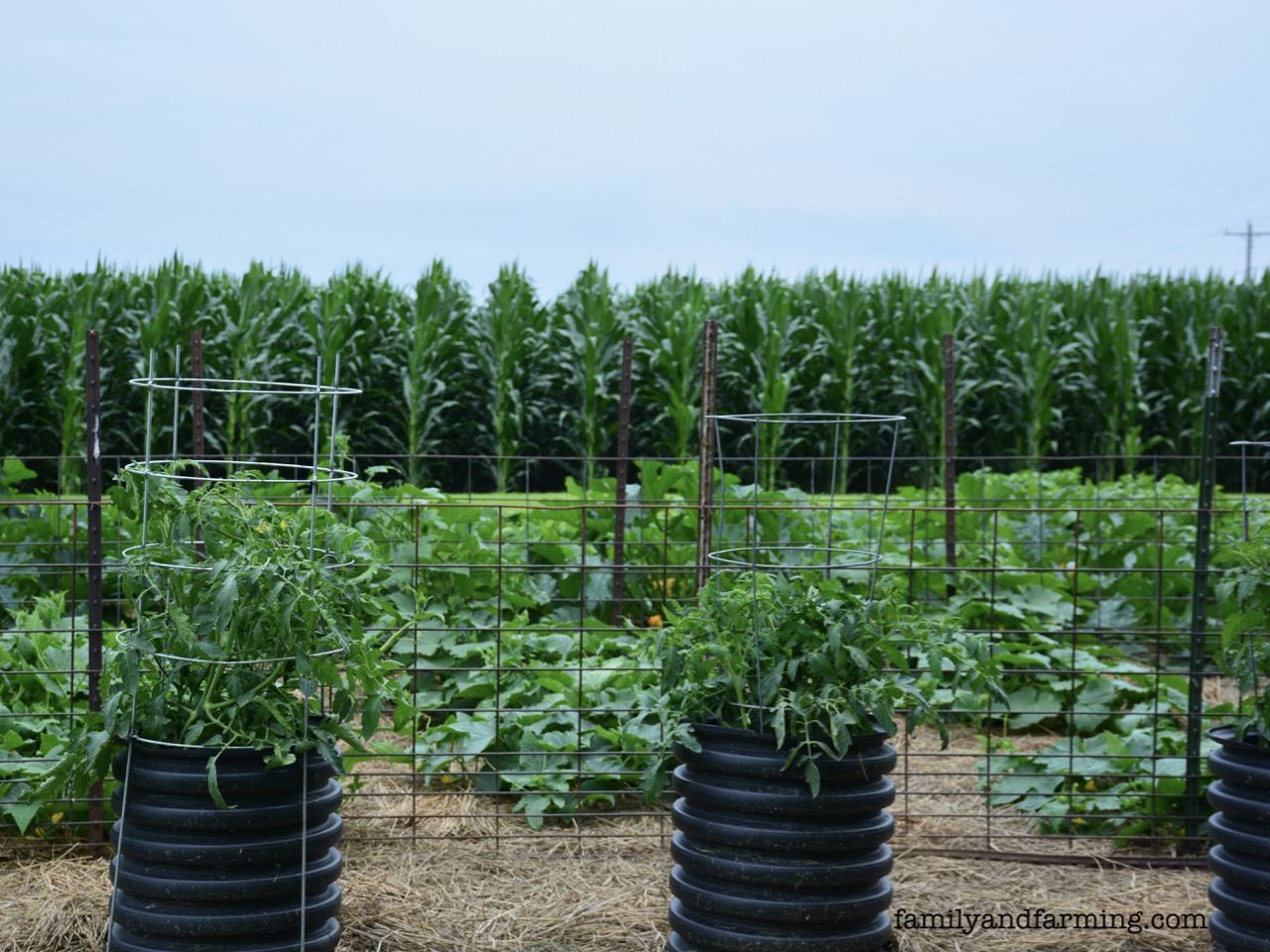Raise your hand if you hate to pull weeds. Are all hands up? Now that we all agree that weeding a garden is everyone’s least-liked gardening activity, I will outline the steps needed to create a no weeding and very productive garden.
Our garden has been organic and weed free for decades because we are lazy. We don’t want to waste time and money treating pests and we definitely don’t want to pull weeds. Yep-we are very lazy gardeners!
Previously I posted about throwing every possible kitchen scrap onto your garden to build up fertility. That’s one important step in lazy gardening. There are a few additional steps, and none of them involve weeding your lazy garden.
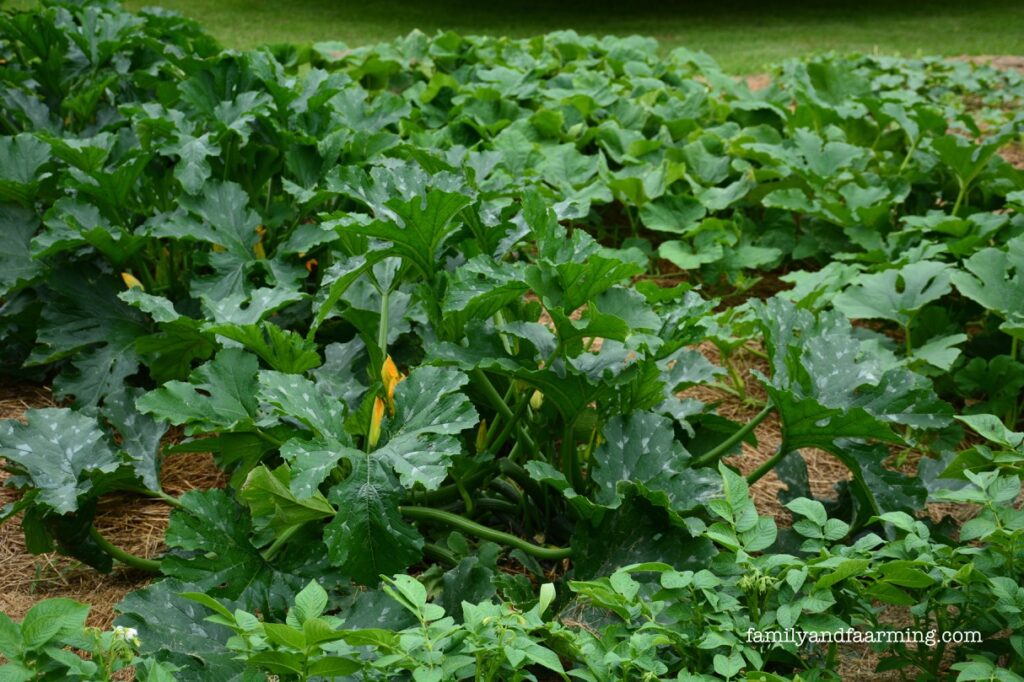
On June 3, our neighbor came by and tilled the garden. All of last season’s old mushy compostable material was mixed with the soil beneath to create a soft, highly fertile growing material. The garden won’t be put in until June 11. Procrastination is part of lazy gardening.
Planting a Lazy Garden
Because we’re lazy, we don’t start seeds. We can rationalize this lazy step because we are busy putting in the farm’s crop in April and May. We spent around $50 this year on plants that were on clearance at the local farm supply store.
Several tape measures are used to assure straight rows. Just because we’re lazy doesn’t mean we don’t practice craftsmanship. We really do like straight rows. In a month there will be a start of an explosion of plants, and you won’t be able to see those rows well, but there is an organization under it all.
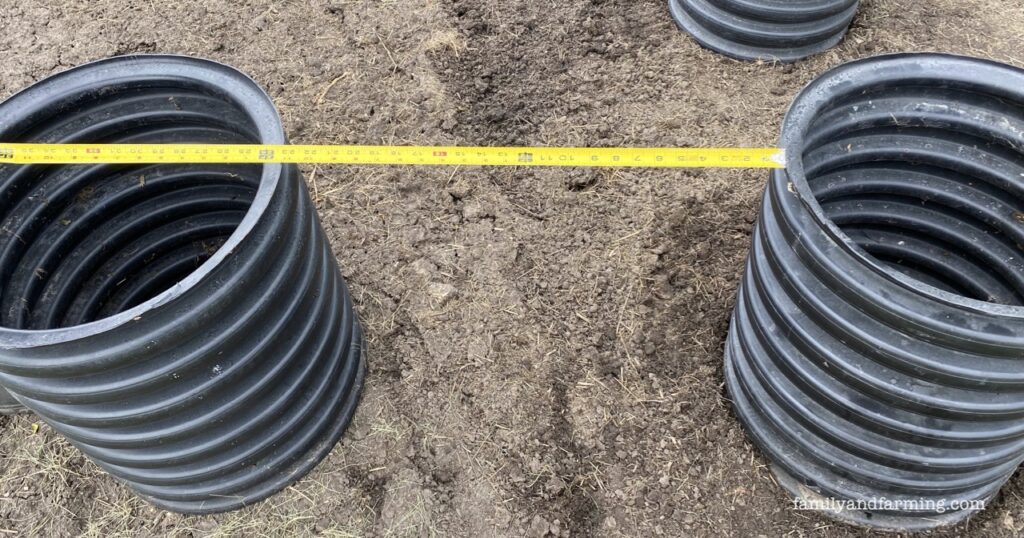
We rotate the placement of every vegetable within the garden every year because we want to keep disease and blight at bay. As example, tomato plants are now on the north end of the garden. Last year they were on the south end.
Remember, lazy gardeners don’t deal with bugs. That’s too much effort. We also practice crop rotation in our farm fields for that reason. It’s also fun to change things up and rest our eyes on different plants every year.
What are Those Big Black Tubes?
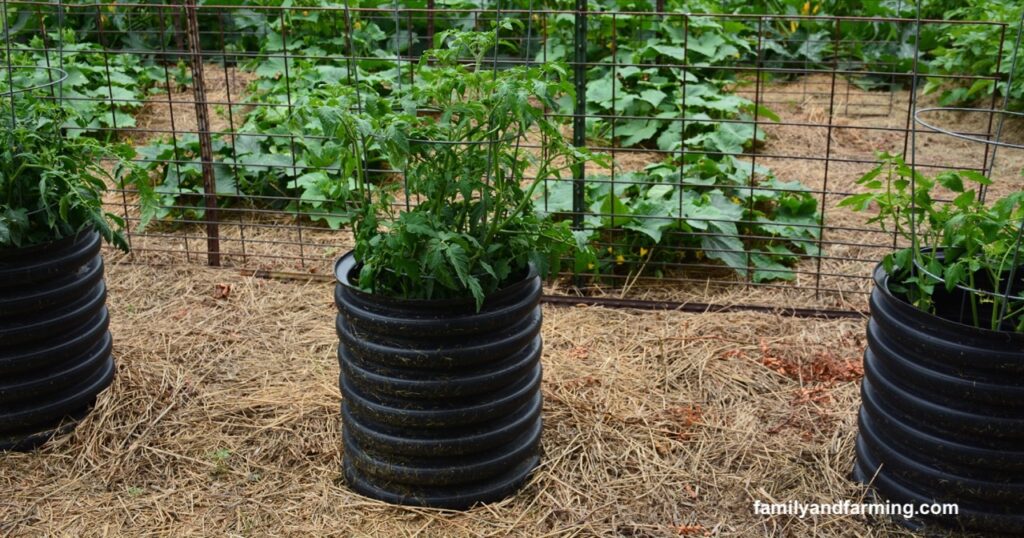
These tomato-protecting tubes are a byproduct of farm field tiling. When field tile is installed into a farm field, the field tile is wrapped around large black tubes to help to unwind the field tile underground. We kept these large black tubes and then cut them into tomato-plant sized sections to protect the plants from wind, bugs and varmints like rabbits and raccoons. Iowa is a very windy state and it’s especially windy in the country, so we like to protect our tall plants with these left over cut up black tubes. We then insert a tomato cage to further support the plants.
In case you’re wondering if the black tubes hinder the growth of plants, they don’t. They just protect these tender plants that are exposed to full sunlight in their growth progress.
Mulch and Mulch and More Mulch
This year we decided to use up some old bales of hay and straw that had been languishing in a farm building. Lazy gardeners use up things around the farm/home so they don’t have to go anywhere for supplies. We used ten bales. We spread this weed blocker liberally around the plants and all over the garden. As the summer progresses, we will use grass clippings from our yard to deepen the mulching between all of the plants.
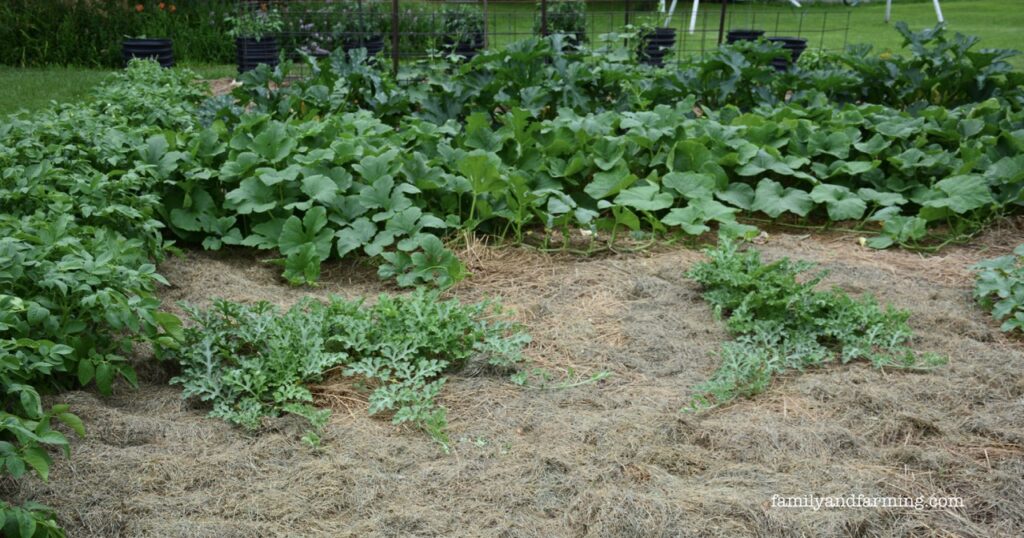
Most years we only use grass clippings. We were cleaning out buildings and found these bales. Next year we will go back to using only grass clippings. With this lazy gardening mulching method, we won’t weed during the entire garden-growing season. As the summer progresses we will continue to dump vegetable peelings and organic matter on top of the mulch. We could create a compost pile, but this lazy method is easier. The organic matter will continue to decompose and add to the organic growth of the garden.
How Much Water for a Lazy Garden?
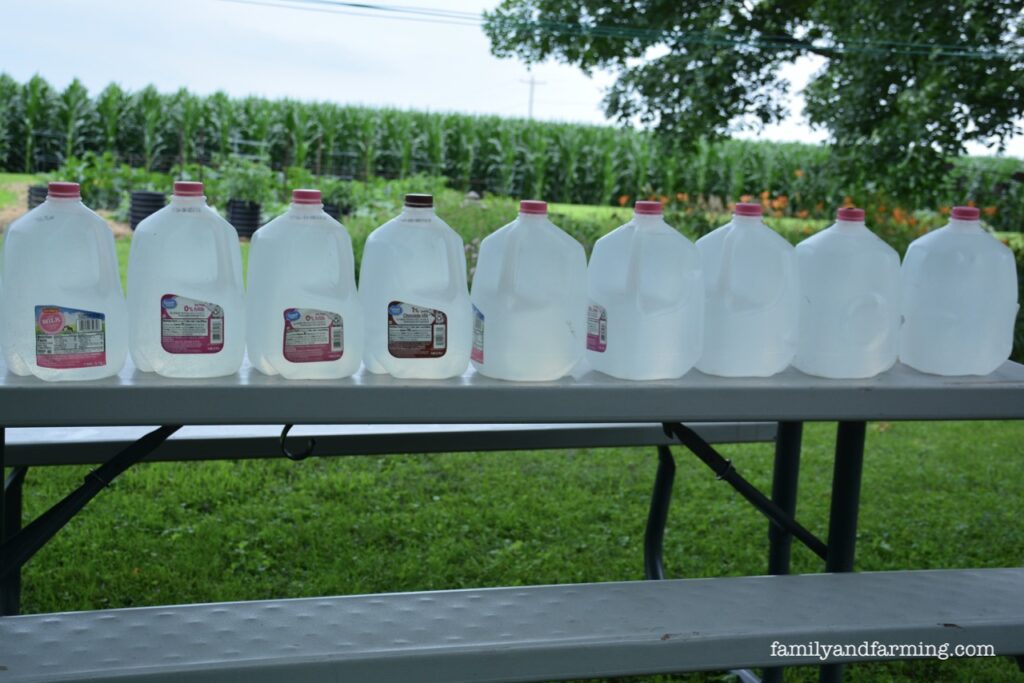
We don’t water our lazy garden that much. I’ve seen people run sprinklers for hours on their gardens. That watering method just wastes water and may lead to pests and blight. When any garden is just beginning, you should water it 3-4 times a week, twice a day, especially if it’s really hot. Just fill a 5-gallon bucket of water and use a large fast-food drink cup (30 ounces) to pour water onto each plant. Pour the water at the roots of the plant, not the leaves. (Refer to the bugs and blight comment.) At the beginning, we used 10 gallons of water in the morning and evening. Our garden is BIG – 25X50 feet, so keep that in mind.
This watering method will continue for 2-3 weeks. Once the plants are well established, you really don’t have to water your lazy garden that often. The deep mulch will hold any rain moisture on top of the roots of the plants that are now well established.
Let the Plants Produce!
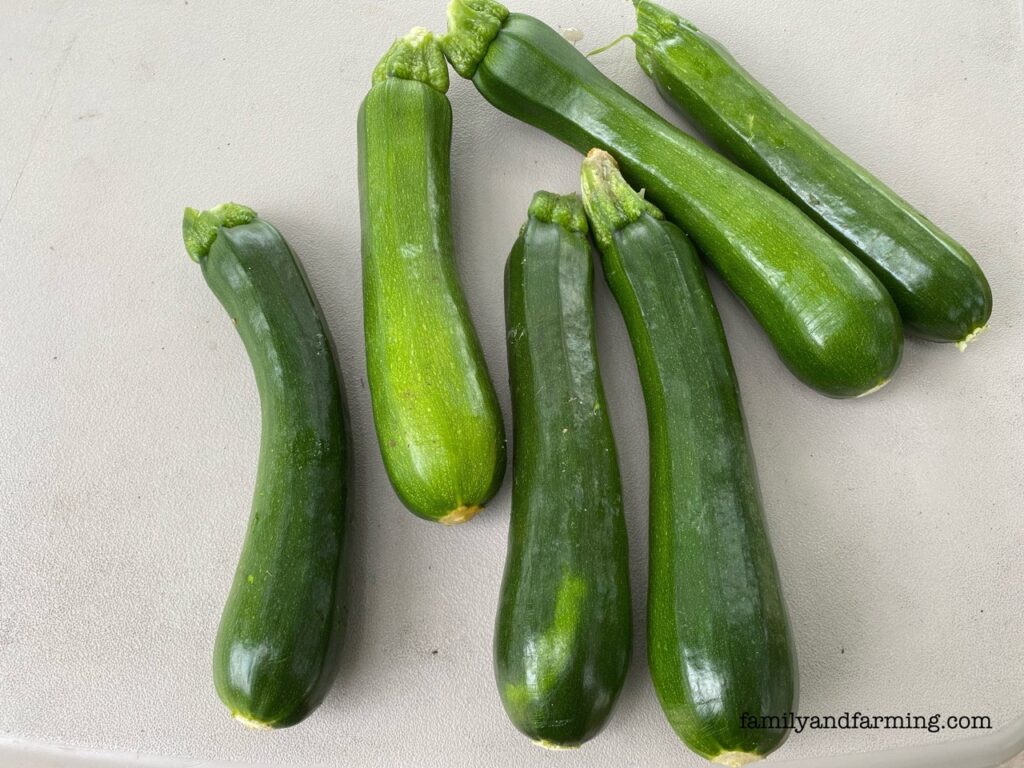
Here’s a photo of the today’s pick of zucchini from the garden. We planted four zucchini plants and have harvested around a dozen zucchini this week. This is only 30 days from our June 11th planting. We will harvest zucchini for at least 6-8 weeks to eat and share. The cucumbers plants are producing and everything planted is now well established. You will notice that we put up hog panel fencing to encourage the cucumbers to climb. These rigid fence panels are just the right size for cucumber plants. It’s easier to pick the cucumbers from the fencing. Remember, we’re lazy gardeners.
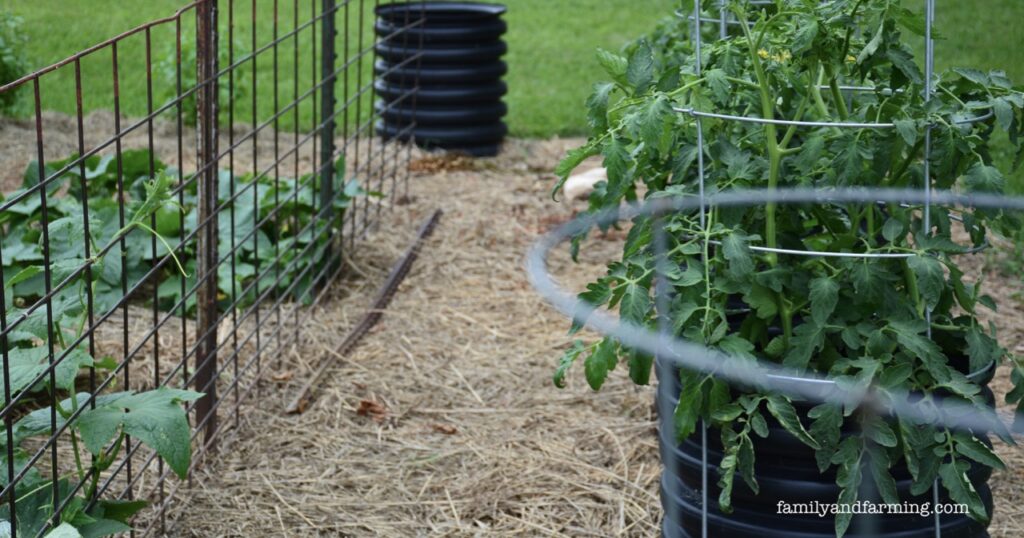
The garden plants will only get bigger and start producing heavily as the summer passes. We will spend our time picking produce and not weeding our garden.
At the end of the growing season there will still be weed-stopping mulch in the garden that will degrade over the fall/winter and spring to jump-start our lazy garden again.
Easy!
The next post will feature easy ways to incorporate vegetables into every meal.
Be Blessed!
Discover more from Family and Farming
Subscribe to get the latest posts sent to your email.
